Moving Mountains

A WHITE EVANGELICAL leader recently asked me how white supremacy shaped Republicanism. The truth is this: Belief in the supremacy of whiteness has shaped both parties and all facets of life in the United States.
The Grand Old Party wasn’t always synonymous with bold-faced bigotry. In fact, it wasn’t even synonymous with the South. The party of Lincoln was crafted in the North in 1854 to counter the expansion of Southern slavocracy into new territories.
As the only surviving party from the nation’s founding, Democrats—based in the South—were keepers of the status quo, maintaining the health of the nation’s nascent systems and structures. The two parties morphed into the two sides of the Civil War: the Union (Lincoln’s Republicans) and the Confederacy (Southern Democrats).
Lincoln’s GOP won and spent the first several post-war years reordering the landscape of power in the U.S.: They outlawed the 246-year-old American economic engine known as slavery, removed race as a determining factor of citizenship, and expanded the right to vote to all male citizens, regardless of race. Formerly enslaved Africans in the U.S. flourished. An estimated 2,000 were elected to public offices across the country—as high as lieutenant governor—and several won seats in the U.S. Senate. But their streak ended when federal troops were pulled out of the South.
Over the next couple of decades, Southern Democrats mounted a legal, social, and political civil war to re-establish white male supremacy in the South. Peonage laws filled former plantations with convict-leased workers by lowering bars of criminality and focusing enforcement on communities of color. Between 1877 and 1950, more than 4,000 black bodies swung from trees across the South while white mobs rioted, massacring black men, women, and children with impunity in states across the Midwest and Upper Midwest.
Then there was a shift.

TO LOOK AT HIM, you know he’s lived a hard life. With ridges creasing his 27-year-old face, my cousin Shack looked me in the eye during a family gathering and helped me understand how hopeless he feels. The people in his Newark, N.J. neighborhood are being pushed out of their community. The Whole Foods and condos that are moving in are raising the costs of rent and food. The neighborhood’s old guard can’t keep up. This is the case in almost every city across the country. In my own neighborhood—Petworth in Washington, D.C.—I have watched condos rise around me and Starbucks and small bistros move in over the last six years. When I moved here in 2011, taxi drivers and community veterans told me that, until recently, they considered Petworth one of the most dangerous and impoverished neighborhoods in D.C. Gutted by the violent uprising in response to the assassination of Martin Luther King Jr. in 1968, the adjacent neighborhood Columbia Heights lay abandoned by city services and industry, and given over to poverty and violence, for more than three decades. When the city decided to develop Columbia Heights, it was only a matter of time before they would do the same to Petworth. “But gentrification is not the problem,” Shack said. “Poverty is the problem.” I heard those words and I wanted to push back. The anti-poverty advocate in me wanted to say, “Get with the program, cuz. Gentrification is the devil.” But Shack had a point, a good one. Obviously, repair and development of the neighborhood isn’t the problem—it’s the displacement of often-poorer people by more affluent people that usually goes with it. These neighborhoods should have been repaired and developed decades ago according to the desires of their homeowners and residents.
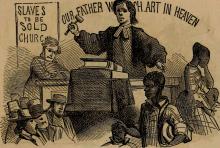
“THIS TIFFANY stained glass window was donated by parishioners in honor of Jefferson Davis,” said our guide, Barbara Holley. Holley is a member of the “history and reconciliation initiative” at St. Paul’s Episcopal Church in Richmond, Va. St. Paul’s, located across the street from the Virginia general assembly and around the corner from the Confederate White House, was called “the Cathedral of the Confederacy” for a reason. Fragments of stained glass honor Confederate President Jefferson Davis and Gen. Robert E. Lee. Both men gleaned inspiration, comfort, and resources for their cause here. Their pews are marked with commemorative plaques.

“ONCE UPON A TIME ...” We like that. Four words signal to our colonized brains: “It’s story time!” We’re gonna go on an adventure! We’re gonna meet mice and pumpkins and fairy godmothers and wicked stepmothers and oppressed blonde women wearing baby-blue peasant wear and neat white aprons. And we’re gonna fall in loooooove. Ahhhh ...
July 2003. Rolling across the northern South, I follow a story, from tourist trap to tourist trap along the Cherokee Trail of Tears. “Watch the metanarrative,” says Randy Woodley, our guide on the journey. What do the museums, the plays, the tourist shops want Americans to believe about themselves? “God guided us West.” “It was destiny.” “Those featherheaded people became our friends.” Or: “They were dead before we got here.” Or: “They just left. Sure, they were ‘removed,’ but we had a hoedown for the ones who hid in the hills and stayed.”
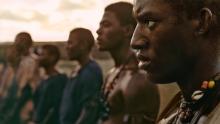
THE NATION'S FIRST blockbuster television miniseries, Roots, shocked the nation when it started airing on Jan. 23, 1977. Based on Alex Haley’s research on his own family’s story and adapted for television from Haley’s novel, Roots offered the world its first cinematic depiction of Africa and Africans unfiltered through the conduit of Hollywood’s racialized imagination. White Tarzan and Jane were nowhere to be found in Juffure, Gambia. Kunta Kinte was the leading man. Fanta was his ingénue—black ... and beautiful.
For eight nights the Kinte family unfolded from generation to generation, focused on individual family members’ struggles against generations of evil white slave masters.
But the 2016 “reimagined” version of Roots places the snatched descendants of Omoro and Binta Kinte squarely within the unyielding machine of the international slave trade—an economic system that, fundamentally, sought the well-being of European nations at the expense of the rest of the world.
In 380 B.C.E., Plato articulated a grand idea in his treatise The Republic. There is this thing called “race,” he posited. Race is determined by the kind of metal a person is made of, he said: silver, gold, iron, or copper. A person’s race determines how that person serves society.
The transatlantic slave trade took Plato’s notion and expanded the “republic” to encompass the world. Guided by Western philosophers’ notions of human hierarchy, Western popes and monarchs declared the right of Europeans to enslave “uncivilized” peoples for the benefit of the crown. It didn’t take long for Plato’s copper and gold to morph into Virginia judicial law that delineated between slaves and servants based on skin color. Colonial “races” became white, black, and red.
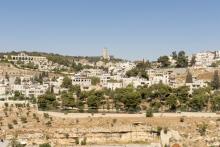
THE ROAD WAS bumpy—full of deep holes and harrowing possibilities for slippage down a roadside slope. My heart raced as I considered the possible headline back home: Bus tumbles down Israeli slope—50 Americans killed by Palestinians. Yes, that would likely be the headline, but it wouldn’t tell the story.
As our bus rolled through this stretch southwest of Bethlehem, my heart raced as Amal Nassar explained that the area had been declared property of the Israeli state decades ago. Since then, Israel built smooth roads, but we weren’t allowed on them. To the right of our bouncing bus was an adjacent highway reserved for Israelis—Palestinians are restricted from driving on these Israeli highways, relegated to the old dirt roads.
Our bus wound around sharp corners, up a hill until it came to a stop. There didn’t seem to be any building structures in sight so I wondered why we’d stopped. Nassar explained that the Israeli government had set large boulders in the middle of the road to block traffic from reaching her family’s farm, so we would have to hike the rest of the way.
We stepped off the bus and onto a dirt road strewn with rocks and trash—old tires, plastic bags, plastic bottles. When the Israeli government claimed the land, it ceased basic services such as trash pick-up, electricity, and running water to Palestinians in the area. It was an effort to make life so difficult that the Palestinians would choose to leave—in modern human rights terms, the world calls this ethnic cleansing. Nassar explained that many families have chosen to leave. Once they are gone for three years, the Israeli government claims that their property has been abandoned and that the state then has legal grounds to claim the power of eminent domain over the land.

A MILLION YEARS ago, when I was 23 years old, I sat in a lecture hall, flanked by college students who tutored at the youth program where I worked. They had invited me to their campus ministry’s worship service. An Asian-American woman named Susan Cho—young (about my age), tall, straight-backed, clear-voiced, and refreshingly funny—stepped to the podium and began preaching.
I sat transfixed. She dove into the scripture and it came alive! She explained what was going on in the world of the biblical characters in a way that made it feel as if they were living today. I felt like I knew them—I understood them. And then she brought home the meaning of the text for our lives in Los Angeles, months after the 1992 riots. This woman gave one of the most dynamic and biblically accurate sermons I had ever heard.
But then a familiar thought came into my head: “This is heresy,” it whispered.
You see, in college I was part of an evangelical ministry in which women could lead behind the scenes and share their testimony during worship services, but we could not preach or, for that matter, teach the scripture—especially to men. Ideas of male dominance were never taught outright, but they were observed like tenets of the faith.
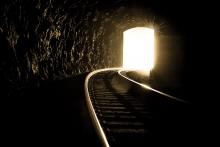
If Facebook feeds are any measure of anxiety levels, then we’re reaching a new high. Friends’ posts share news of overt hatred and violence, the likes of which we haven’t seen in decades:
- A seemingly unending onslaught of police killings of unarmed black people.
- White supremacists shooting people as they pray, setting fire to churches, and shooting into crowds of multiethnic protesters.
- More than 1,000 mass shootings in the U.S. since the 2012 massacre of children at Sandy Hook.
- Millions of Syrian and African refugees flowing into Europe—the greatest movement of people across Europe since the Holocaust.
- The so-called Islamic State ushering in what looks to be a new world war.
- Oh, and the climate is changing at an alarming rate.
It feels like the world is unraveling.
But what if it is? What if we are, in fact, witnessing the end of the world as we know it? Would that be so bad?
Think about it. The world order, as we know it, rests on deep foundations built by worldwide colonization, imperialism, slavery, patriarchy, exploitation, and ecological consumption. Most of the violence listed above traces back to economic and social systems of dominance—one group over another or humanity’s domination of the rest of creation. White supremacists feel threatened because people of color are finally rising up and saying “No more!”
While 16 mass shootings occurred between 1995 and 2005, there were 38 from 2005 to 2015, according to a recent report by Mother Jones. In recent years, people have pushed against the gun lobby with all their might, but the NRA seemed invincible.
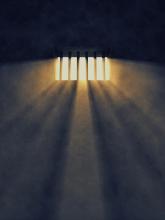
POPE FRANCIS called our country to honor the sacredness of all human life. He called on Congress to embrace a consistent ethic of life—to abolish the death penalty. The state killed no one while Francis walked among us. But three days after his departure, blood flowed.
Six people in five states were scheduled to be executed in the U.S. within one week of each other in the beginning of October:
Wednesday, Sept. 30. Kelly Gissendaner, convicted for the orchestration of the 1997 murder of her husband, converted to Christianity while on death row in Georgia. Gissendaner, a respected student of theology, was put to death after three failed Supreme Court appeals.
Wednesday, Sept. 30. Richard Glossip, who is widely believed to be innocent of the 1997 murder-for-hire for which he was convicted, was scheduled to be executed in Oklahoma, but Gov. Mary Fallin issued a stay of execution. Fallin offered the stay not because she believed that Glossip was innocent, but rather because of questions over whether the state possessed the legal drug protocol to put him to death.
Thursday, Oct. 1. Alfredo Prieto was executed in Virginia for the rape and murder of a woman and her boyfriend in 1988. Prieto was believed to be a serial murderer with an IQ below 70, according to Amnesty International. Prieto had an appeal pending when the state killed him.
Friday, Oct. 2. Kimber Edwards was convicted of the murder-for-hire of his ex-wife in 2000, but another man recently confessed to having acted alone. Edwards, who has autism, originally confessed to the crime, but at his trial and ever since he has said he was innocent. His death sentence was commuted to life in prison by Missouri Gov. Jay Nixon.

EVEN AS SOUTHERN states—and GOP candidates—jumped through hoops to distance themselves from the Confederate flag, a backlash erupted among those claiming the flag was merely a symbol of “heritage.” Battle-flag waving Southerners (and Confederacy sympathizers) seemed to leap at the opportunity to wave their banner high.
But what about the rest of us? One of the most profound statements I’ve heard recently came from Rev. Jin Kim, founding pastor of Church of All Nations in Minnesota. This Korean-born pastor stood at the podium of the Sojourners Summit and said with conviction: “I am a white supremacist.”
How can this man, a person of color who’s dedicated his life to ethnic and cultural reconciliation, be a white supremacist? The same way any of us can. After all, at its heart white supremacy is not about white hoods, battle flags, and burning crosses. Those symbols are what we call explicit bias. People know when they are practicing it.
But most often white supremacy is about implicit bias that favors whiteness. It’s about the unconscious associations we make in our minds before we even know we’ve done it. White? Rich. Black? Poor. White? Good. Black? Bad. White? Trustworthy. Black? Scary. You get the idea.
These are the unconscious biases that shape the way we order our lives; the communities we live in, the places we shop, the churches we attend, the leadership from others we accept (or reject), and the policies we support (or don’t).
It’s not hard to fume at the thought of the killer of Mother Emanuel’s Nine. And it feels good to click “like” and share posts calling for the removal of Confederate flags.
But if we stop there, bias beats us. It is the unconscious biases of the masses that keep us from moving forward, not the explicit biases of the few. So, check out this tongue-in-cheek list of four easy ways to be a white supremacist (regardless of your own race).
1. Plan a conference on church planting with a speaker lineup so white it would make Honey Boo Boo blush. And if you want to increase your “diversity,” have one speaker of color (even if he is from India), an Asian emcee, and maybe a black worship leader.

SHE WAS MAD—fuming.
Thirteen black evangelical leaders rolled across Southern states on a speaking tour of historic black colleges and universities. On a mission to call forth the next generation of black leaders, we traversed the land where our ancestors had worked fingers to bone, drank from separate fountains, and cut loved ones down from trees like dead fruit.
But this is not what made Vera mad.
For the last hour a crowd of black leaders sat, stood, and leaned in as we shared our stories of barriers to advancement within white evangelical organizations. It wasn’t a mean-spirited conversation. It was a needed one—a healing one. Our stories were strikingly similar, even though none of us had worked in the same organization.
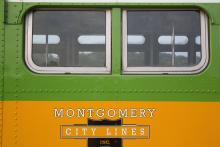
I WALKED THROUGH the halls of the Rosa Parks Museum in Montgomery, Ala.—slowly. Original documents lined the walls of the nation’s central memorial to the local actions that helped trigger the national mass movement for civil rights. To skim would have been a sacrilege. Each document was evidence. Evidence of struggle. Evidence that America’s apartheid happened. Evidence of a miracle.
The museum is like a labyrinth. Each room builds on the last, adding color and depth to a reality most of the nation has only experienced in the two-dimensional contours of sepia-toned documentary footage and pictures.
I entered the room with the kitchen table where Martin Luther King Jr. dropped to his knees and prayed, weeping, scared, and still holding onto the last vestiges of his personal dream for a middle-class preacher’s life. For my tour group, the room was about that table, but the documents lining the walls like wallpaper caught my eye.
One stood out. It was a full-page newspaper ad with a letter from the White Citizens’ Council of Montgomery to the blacks of Montgomery. The letter pleaded with the black citizens to “stop their violent attack on their city.”
The first time I read “Stop this violence,” I was befuddled. What violence?
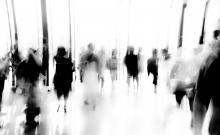
2014 WAS NOTHING if not the year when implicit bias was exposed in law enforcement, the justice system, and media reporting. As the nation sorted out reporting on the police shooting of 18-year-old Michael Brown in Ferguson, Mo., police treatment of protesters, and the accuracy of the reporting itself, the words “implicit bias” or “unconscious bias” jumped to the fore again and again.
According to the Kirwan Institute report “State of the Science: Implicit Bias Review 2014,” “Implicit bias refers to the attitudes or stereotypes that affect our understanding, actions, and decisions in an unconscious manner.”
My question is this: If 2014 opened the eyes of the general public to the presence of implicit biases embedded in our systems, could 2015 be the year when we begin to take a closer look at the impacts of implicit bias in our public systems and structures—and the way we talk about them?
For example, take this tit-for-tat about the education system: On Oct. 11, in his third column in a series called “When Whites Just Don’t Get It,” Nick Kristof wrote in The New York Times, “Too many whites unquestioningly accept a system that disproportionately punishes blacks and that gives public schools serving disadvantaged children many fewer resources than those serving affluent children. We are not racists, but we accept a system that acts in racist ways.”
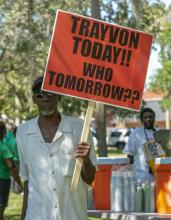
WE HAVE AMPLE reason to weep of late: war in Gaza, crisis in Syria, ISIS in Iraq, the slaying of five unarmed black men in one month at the hands of U.S. police officers, and the demise of congressional immigration reform.
Scripture calls us to cross over into the valley of lament at times such as these. Yet most of us are more comfortable on the plateau of rage or the plain of apathy.
I once led a training on lament and racial reconciliation. Twenty college students sat in the living room of a ministry house as I recited a lament from Jeremiah, the “weeping prophet”: “O that my head were a spring of water, and my eyes a fountain of tears, so that I might weep day and night for the slain of my poor people!” (9:1).
I spoke of the impact of racial injustice in our nation and on our campuses. I recounted slave narratives to the students—stories that had brought me to tears privately. Yet, when the last word was read, the students sat silent with glazed eyes staring back at me.
I didn’t get it. The whippings of human beings, the children separated from their mothers and fathers, the hands, feet, and lives lost in the midst of America’s darkest hours—these things happened. How could we not lament?
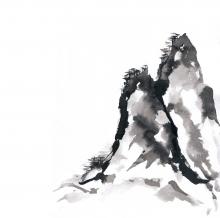
LOVE. THAT'S WHAT moves mountains. That’s what the inimitable Dr. Maya Angelou shared with Oprah Winfrey in an interview a year before Angelou’s passing on May 28, 2014, at the age of 86.
In the days following her death, tributes blanketed the television and internet. Perhaps the greatest came on Sunday evening, June 1, as Oprah Winfrey aired a series of exclusive interviews with Dr. Angelou. Thus, the prophet spoke from the grave and this is what she said: “Love moves mountains.”
Jesus said faith moves mountains—faith the size of a mustard seed (Matthew 17:20). Did Dr. Maya Angelou dare to contradict Jesus? The poet/prophet says love. Jesus said faith. Which is it? Perhaps both.
People of faith know—they have witnessed it. Faith does move mountains. But they also know this: Faith’s power can lay dormant until it’s set ablaze by love. Perhaps only love has the power to fortify faith enough to make the earth quake.
Anger can shake earth, but it cannot move it. Rage can break earth, but it cannot move it. What if faith the size of a mustard seed requires the force of love to move the mountain? If that is the case, we are left with one haunting question: Why have we seen so few mountains move in our lifetime?

RECENTLY, the U.S. celebrated the 60th anniversary of the landmark Supreme Court case Brown vs. Board of Education that declared unconstitutional state laws establishing separate public schools for black and white students. By winning the Brown case, Thurgood Marshall broke the rock-hard foundation of racial barriers between black and white schools in the U.S.
But the civil right of equal opportunity for equal education never ensured the human right of equal access to it. Thus the explicitly racial divide, reinforced by law, was replaced by a close kin: the poverty divide, reinforced by economic blight entrenched by white flight to the suburbs.
Ten years later President Lyndon B. Johnson took a bulldozer to that new economic divide by declaring, in his January 1964 State of the Union address, an unconditional “War on Poverty.” He said, “Let this session of Congress be known as the session which did more for civil rights than the last hundred sessions combined.” And it did.
EVERY WAR HAS multiple fronts. Johnson’s fight against poverty was a legislative one, which played out in states, cities, and school districts across the country. Within two years Congress had passed the Civil Rights Act, the Food Stamp Act, the Economic Opportunity Act, and the Social Security Act. Each act was a legislative beachhead in the assault against U.S. poverty.
The Elementary and Secondary Education Act of 1965 represented a major shift in the way the U.S. conceived public education. In this act, Johnson took direct aim at the economic infrastructure that barred blacks and other impoverished people from accessing equal education.
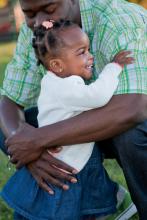
NEARLY 50 YEARS ago, the U.S. Department of Labor issued one of the most controversial and influential reports of our time, “The Negro Family: The Case for National Action,” aka “The Moynihan Report,” named after its author Daniel Patrick Moynihan. The March 1965 report offered our nation’s first comprehensive look at the roots of poverty in the African-American community 100 years after the Civil War. The picture wasn’t pretty.
Pointing to black poverty’s roots, Moynihan started with the hell that was the U.S. slave system: “American slavery was profoundly different from, and in its lasting effects on individuals and their children, indescribably worse than, any recorded servitude, ancient or modern.” Going on to quote Nathan Glazer, Moynihan illuminated the absolute powerlessness and dehumanization of enslaved black people under antebellum law and within the social structures of slavery.
Moynihan went on to examine the impact of the Reconstruction period, urbanization, unemployment, and inequitable wages on African Americans’ economic station in U.S. society. He concluded that the single greatest result of these forces was black families’ demise. And the single greatest result of this demise was entrenched poverty, according to Moynihan.
A 2013 Urban Institute report, “The Moynihan Report Revisited,” reflected that in the early 1960s Moynihan was alarmed that 20 percent of black children lived in single parent households with their mothers (not their fathers), but by 2010, 20 percent of white families lived in such households while 53 percent of black children were being raised by their mothers. According to the Urban Institute, fatherlessness in the U.S. has gotten worse, and it is no respecter of race.

IT WAS LIKE the end of the movie Lincoln. In an instant, one whole side of the House of Representatives turned, looked up at the five core fasters from the Fast for Families and erupted in overwhelmingly spirited applause. The applause reverberated throughout the chamber for what seemed like an eternity, though it was really only minutes. Ah, but what grand minutes. I wept. My body, standing there in the gallery, could not contain it.
The Fast for Families: A Call for Immigration Reform and Citizenship was launched on Nov. 12 with core fasters abstaining from all food and drinking only water. Based in a tent on the National Mall, only a few hundred yards from the Capitol building, the fast was sponsored by nearly 40 church and labor organizations and garnered support from more than 4,000 solidarity fasters across the U.S. and around the world. Our goal: To move the hearts and compassion of members of Congress to pass immigration reform with a path to citizenship.
In the Capitol building on Dec. 2, during the hour before the startling ovation, Eliseo Medina (the leader of the fast, which had reached the end of its 21st day on that Monday evening), D.J. Yoon (executive director of NAKASEC, a Korean-American advocacy agency), Cristian Avila (from Mi Familia Vota), and I received House member after member who’d come to visit us in the gallery to say “thank you for your sacrifice.” All the faces and names you usually see flashed across the screen commenting on the events of the day on cable television shows—they came to us, standing in the flesh, shaking our hands, grateful and concerned for our health.

AT THE URBANA student missions conference in December 2000, three Indigenous leaders who are also evangelicals were introduced to key members of the leadership of InterVarsity Christian Fellowship. Richard Twiss (Rosebud Lakota/Sioux), Terry LeBlanc (Mi’kmaq), and Ray Aldred (Swan River Cree) sat down with InterVarsity leaders and began to share their stories. InterVarsity leaders started to ask questions about culture and faith and evangelism and contextualization.
Soon they found that these leaders had a fresh word for the entire movement in its struggle to become a racially reconciling movement. Other elders joined the three: Randy Woodley, Bryan Brightcloud, Cheryl Bear-Barnetson, and Melanie McCoy. In the course of a series of conversations, the question of land use and protocol came up.
The elders explained: All cultures, including Indigenous cultures, have protocols—particular ways of doing things. Some of the most significant protocols in Indigenous cultures are connected to the use of land. The InterVarsity staff adopted the posture of students and, in humility, submitted to the teachings of these elders of several nations that were on this land thousands of years before Europeans ever “discovered” it.
The elders called their attention to Acts 17:26-27: “From one ancestor he made all nations to inhabit the whole Earth, and he allotted the times of their existence and the boundaries of the places where they would live, so that they would search for God and perhaps grope for him and find him—though indeed he is not far from each one of us.”
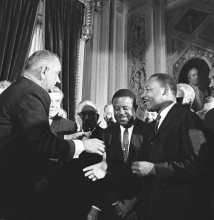
BACK IN THE day, when Stevie Wonder was Wishing “those days could come back once more,” my 6-, 7-, and 8-year-old friends and I had no idea what the heck he was talking about, but we loved the groove and would blast Wonder’s Songs in the Key of Life album from our front steps as we played in front of my house in our West Oak Lane neighborhood of Philadelphia.
Sometimes the boys would coast down the street on handmade skateboards, literally made of old skates—the kind with wheels you strapped to your shoes—nailed to short wooden planks. Sometimes the girls and boys would race each other down a steep street, flying at lightning speed on bikes and boards, to see who could make it first to the candy shop at the bottom of the hill. And sometimes, in all the play, a verbal sparring match would break out:
“You so big,” one friend would say, “it take two showerheads to clean yo big butt in the morning!” Then the 7-year-old sparring partner would come back: “Oh, yeah?! You so ugly, yo mama say ‘What dat?’ when she give birth to you!”
It would keep going and we’d all laugh out loud until someone got inappropriate. Usually inappropriateness began with three words: “Yo mama so ...” We all knew to never bring someone’s mother into the sparring match unless you wanted to fight for real. Those were fighting words.
This summer the Supreme Court got inappropriate. They spewed fighting words on the playground that is our national public square.